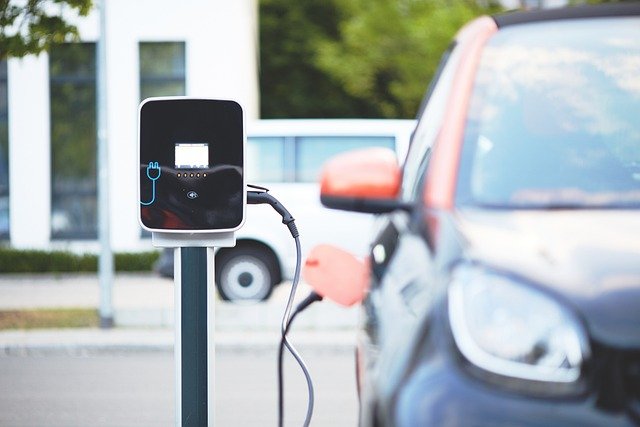Portable Electric Car Chargers: A Complete Guide for EV Owners
Electric vehicles (EVs) continue to gain popularity worldwide as drivers seek more sustainable transportation options. However, one persistent concern for EV owners is ensuring reliable access to charging, especially when away from established charging networks. Portable electric car chargers have emerged as a crucial solution, providing flexibility and peace of mind for electric vehicle owners. These versatile devices allow for charging in various locations and serve as an important backup for emergency situations when fixed charging infrastructure might be unavailable or inoperable.

Introduction to portable electric car chargers and their role in EV ownership
Portable electric car chargers are compact charging devices designed to provide power to electric vehicles in various locations. Unlike permanent home charging stations or public charging infrastructure, these units can be transported in a vehicle’s trunk or storage compartment, offering charging capabilities wherever there’s access to an appropriate electrical outlet. For many EV owners, these portable solutions serve as both a primary charging method and a crucial backup system.
The role of portable chargers in electric vehicle ownership cannot be overstated. They effectively address “range anxiety” – the fear of running out of battery power before reaching a destination or charging station. By providing the ability to charge from standard electrical outlets, these devices offer a safety net for unexpected situations and extend the practical usability of electric vehicles beyond areas with established charging networks. Additionally, they provide flexibility for EV owners who rent homes or apartments where installing permanent charging equipment may not be possible.
Key features to look for in a portable electric vehicle charger
When selecting a portable charger for an electric vehicle, several critical features warrant consideration. The charging capacity, measured in amperage, determines how quickly the device can recharge your vehicle’s battery. Most portable units offer between 16 and 40 amps, with higher amperage providing faster charging speeds but often at a higher price point.
Another essential consideration is the unit’s adaptability. Quality portable chargers often come with interchangeable plugs allowing connection to various outlet types, from standard household 120V outlets to 240V outlets commonly used for large appliances. Weather resistance is equally important, as these devices may need to operate in rain, snow, or extreme temperatures. Look for chargers with robust weatherproofing, typically indicated by an IP (Ingress Protection) rating of IP65 or higher.
Safety features represent another crucial aspect to evaluate. The best portable chargers include built-in protection against common electrical issues such as overheating, short circuits, and power surges. Many modern units also offer smart capabilities, allowing owners to monitor charging status, set charging schedules, and track energy usage through smartphone applications.
Compatibility of portable chargers with upcoming EV models
As electric vehicle technology evolves rapidly, ensuring charging compatibility with new and upcoming models becomes increasingly important. Most current and forthcoming electric vehicles in North America utilize the J1772 connector standard for Level 1 and Level 2 charging, providing broad compatibility with portable charging solutions. However, emerging high-performance and luxury models may incorporate newer charging standards.
Many vehicle manufacturers are developing proprietary fast-charging capabilities, which may require specific charging equipment. Tesla vehicles, for example, use a unique connector, though adapters are available to enable charging from standard J1772 equipment. Upcoming European and Asian models increasingly support the CCS (Combined Charging System) or CHAdeMO standards, which may require specific portable charging adapters.
When purchasing a portable charger for a new or upcoming EV model, verify compatibility with your specific vehicle’s charging port and onboard charging capabilities. Many portable charger manufacturers provide compatibility charts or online tools to help consumers select appropriate equipment for their particular vehicle make and model.
Differences between Level 1 and Level 2 portable chargers
The primary distinction between Level 1 and Level 2 portable chargers lies in their power output and charging speed. Level 1 chargers operate on standard 120-volt household outlets, delivering approximately 1.4 kW of power. These chargers typically add about 3-5 miles of range per hour of charging, making them suitable for overnight charging or situations where time constraints aren’t an issue.
Level 2 chargers, conversely, require 240-volt outlets similar to those used for clothes dryers or electric stoves. These chargers deliver between 3.6 kW and 19.2 kW of power, depending on the specific model and electrical circuit capacity. Most portable Level 2 options provide between 3.8 and 7.6 kW, adding approximately 15-35 miles of range per hour of charging.
While Level 2 chargers offer significantly faster charging speeds, they generally cost more and may require additional electrical work to install appropriate outlets in garages or homes. Level 1 chargers offer the advantage of universal compatibility with standard outlets but at the cost of much slower charging rates. Many EV owners opt to have both options available – a Level 2 solution for regular home charging and a Level 1 portable unit for emergency situations.
Portable charger pricing and features comparison
Portable electric vehicle chargers vary widely in price based on their features, charging capacity, and build quality. Entry-level portable Level 1 chargers typically range from $150 to $300, while more advanced Level 2 portable units can cost between $300 and $800, with premium models exceeding $1,000.
| Charger Type | Average Price Range | Typical Amperage | Charging Speed (Miles/Hour) | Common Features |
|---|---|---|---|---|
| Basic Level 1 | $150-$300 | 8-12A | 3-5 miles | Basic safety features, simple indicator lights |
| Enhanced Level 1 | $250-$450 | 12-16A | 4-7 miles | Weather resistance, smartphone connectivity |
| Standard Level 2 | $300-$600 | 16-24A | 12-20 miles | Interchangeable plugs, basic smart features |
| Premium Level 2 | $600-$1,000+ | 30-40A | 25-35 miles | Advanced safety, full smart capabilities, premium materials |
Prices, rates, or cost estimates mentioned in this article are based on the latest available information but may change over time. Independent research is advised before making financial decisions.
How portable chargers fit into home and on-the-go charging solutions
Portable electric vehicle chargers play a versatile role within comprehensive EV charging strategies. For drivers with access to home charging stations or workplace charging, portable units typically serve as backup solutions for emergencies or travel scenarios. However, for apartment dwellers or those without dedicated parking, portable chargers may function as primary charging devices when used with available electrical outlets.
When integrating portable charging into an overall strategy, many EV owners adopt a multi-tiered approach. This might include installing a permanent Level 2 charger at home for regular daily charging, keeping a portable Level 1 charger in the vehicle for emergencies, and utilizing public fast-charging networks for long-distance travel. This combination provides maximum flexibility while ensuring charging options remain available across various scenarios.
Modern energy management systems are increasingly designed to work alongside portable charging solutions. Some smart home systems can integrate with portable charger controls to optimize charging during off-peak electricity rates or to coordinate with home solar production. This integration allows EV owners to maximize cost efficiency while maintaining charging flexibility.
Portable electric vehicle chargers have evolved from simple emergency backup devices to essential components of comprehensive EV ownership. By understanding their capabilities, limitations, and place within the broader charging ecosystem, electric vehicle owners can ensure reliable power for their vehicles regardless of location or circumstances.



